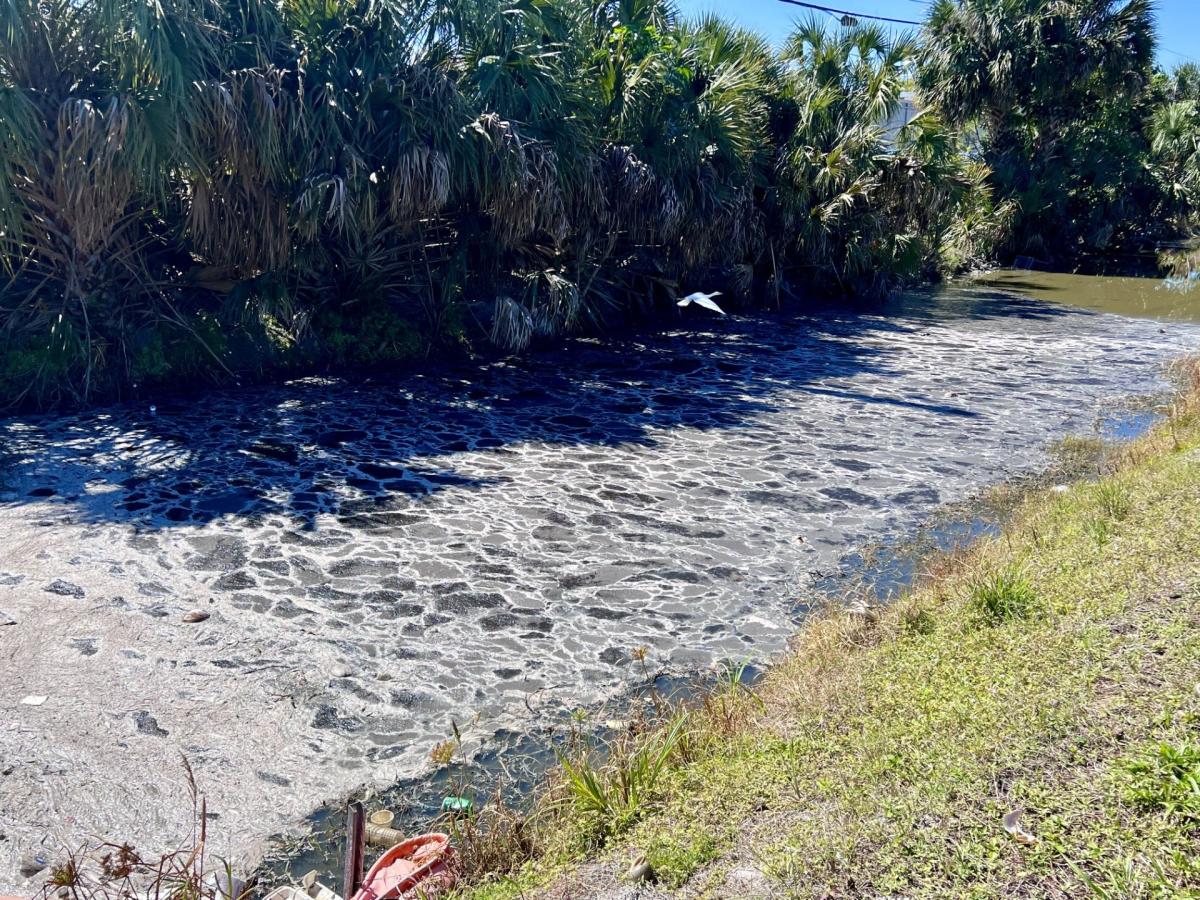LAKE WORTH BEACH — A sewage leak in and around Lake Worth Beach was finally stopped Saturday morning after millions of gallons of wastewater entered canals and waterways over the course of five days.
The leak began Tuesday night after a contractor working with AT&T hit the sewer line near Florida Mango Road between Waterside Drive and the L-10 Canal. Lake Worth Beach Utilities Director Sam Heady said crews worked quickly to contain the leak, but that the devices that stop the flow of sewage were not installed and operational until early Saturday.
Drinking water was not impacted by the sewage leak.
Now, crews are using vacuum trucks to remove contamination from the affected canals and aerators to add oxygen back to the water. The cleanup process is likely to take months, according to Heady.
Early estimates place the amount of sewage spilled between 3 and 5 million gallons — or enough to fill between six and 10 Olympics-sized swimming pools.
Which waterways and canals were impacted by the Lake Worth sewage spill?
While the break is in unincorporated Palm Beach County near Florida Mango Road and Garden Drive, the line is maintained by Lake Worth Beach and takes wastewater from eight communities to a master pump station.
The following waterways were likely impacted by the leak:
-
Lake Clarke and Lake Clarke Shores
-
L-10 Canal
-
L-9 Canal
-
Grassy Saw Lake
-
Lake Osborne
-
C-51 / West Palm Beach Canal
-
Canal between Waterway Drive and West Lake Drive
-
Canal between West Lake Drive and Pine Tree Lane
-
Keller Canal
Healy said extensive testing of all the waterways and those connected to the site will determine just how far the sewage leaked. The pipe carrying the sewage was 3 feet wide and located 20 feet underground. Crews have now installed a bypass around the site of the leak so that sewage can move freely.
More: Health alert issued for multiple popular Palm Beach County waterways after sewage spill
Lake Worth sewage leak is one of the worst in area’s history
Heady said residents have been warned not to swim or fish in the areas affected. Fish in many of the impacted canals have died after the sewage spill because the wastewater decreases the amount of dissolved oxygen in the water, Heady said.
Earlier this week, Heady described the leak as the worst sewage rupture that Lake Worth Beach utilities has ever dealt with.
“This is one of those scenarios that everyone practices for and hopes never happens,” Heady said. “I don’t know of anything else of this magnitude that’s happened here.”
In February, the same area suffered a separate sewage line break that dumped 336,000 gallons of sewage to enter the waterways. The pipe involved in that incident was only 16 inches wide.
What to do if you come into contact with contaminated water
Anyone who comes into contact with the water in those areas should wash their skin and face thoroughly, especially before eating or drinking.
Children and older adults, as well as people with weakened immune systems, are particularly vulnerable to disease. All people should take precaution to avoid coming into contact with the contaminated water.
Where can you get updates on the Lake Worth sewage spill?
For more information about the potential health effects of wastewater overflow, Floridians areencouraged to contact DOH-Palm Beach at 561-837-5900 or chd50contactus@flhealth.gov.
For information about the status of ongoing sampling and water quality monitoring/cleanup efforts,contact the Florida Department of Environmental Protection at (561) 681-6600. Should any problems arise that require immediate attention, residents should contact the Lake Worth Beach’s emergency number at (561) 586-1695.
Kim Miller, a veteran journalist covering real estate and how it impacts Florida’s environment, contributed to this report.
Katherine Kokal is a journalist covering education at The Palm Beach Post. You can reach her at kkokal@pbpost.com. Help support our work, subscribe today!
This article originally appeared on Palm Beach Post: Lake Worth sewage spill stopped Saturday. Is drinking water OK?
